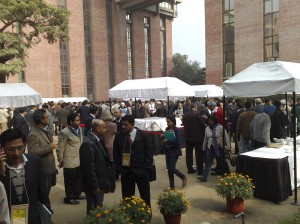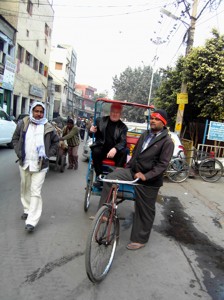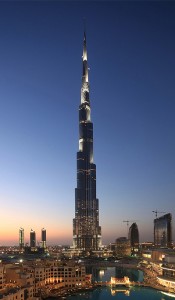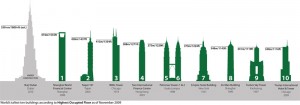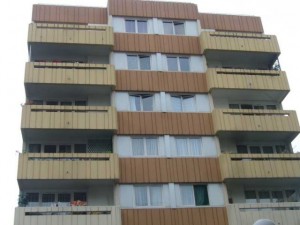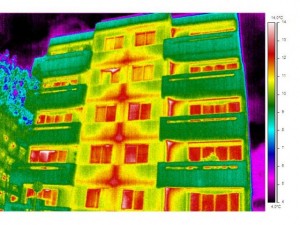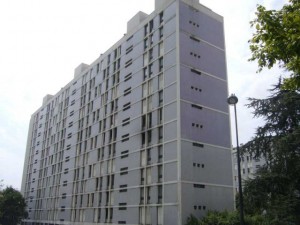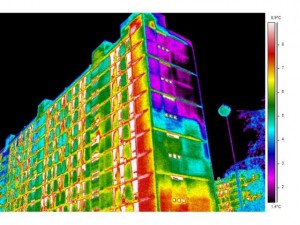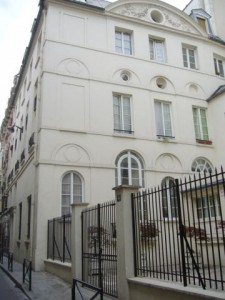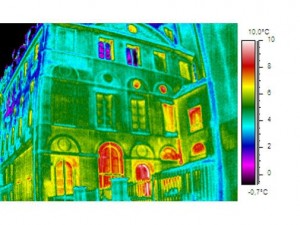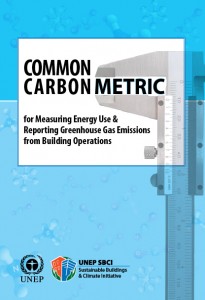How did the Developed Countries get everything so wrong in Copenhagen during December 2009 ? Why was the European Union irrelevant to what was taking place ? Were there no obvious signals … no straws in the wind … well in advance of the Climate Summit ?
Yes, there definitely were ! Almost two years beforehand !! Take a deep breath … and suck this up …
 Statement on Behalf of the Group of 77 & China by Ambassador John Ashe, Permanent Representative of Antigua and Barbuda to the United Nations, at the Thematic Debate of the General Assembly on ‘Addressing Climate Change: The United Nations and The World at Work’ (New York, 12th February 2008)
Statement on Behalf of the Group of 77 & China by Ambassador John Ashe, Permanent Representative of Antigua and Barbuda to the United Nations, at the Thematic Debate of the General Assembly on ‘Addressing Climate Change: The United Nations and The World at Work’ (New York, 12th February 2008)
Introduction
1. Mr. President, the Group of 77 & China thank you for convening this debate in the General Assembly on the theme ‘Addressing Climate Change: The United Nations and The World at Work’. It provides the Assembly with an additional opportunity to exchange views among Member States and with other partners on one of the important issues on the development agenda of the UN.
2. At the outset, the Group of 77 & China reiterates that the UN Framework Convention on Climate Change is, and should remain, the primary comprehensive framework for addressing climate change. Therefore, this thematic debate should be recognized as an opportunity for Member States to dialogue on ways of increasing support for the Framework and on meeting the urgent need for immediate action to fully implement commitments under the Convention and its Kyoto Protocol; supporting the Bali Action Plan and other mechanisms of the Convention.
3. Mr. President, the Group of 77 & China is of the view that there should not be a parallel process of debates that would detract from the negotiation process under the Convention. The Group of 77 & China believes that multilateral action to address climate change should remain firmly rooted in the UNFCCC and the Kyoto Protocol.
4. Furthermore, this thematic debate, as well as the Secretary General’s report on the Overview of UN activities in relation to Climate Change should not attempt to influence any other processes such as the system wide coherence debate or the discussions on international environmental governance.
*** Climate Change as a Sustainable Development Challenge ***
5. Mr. President, the Group of 77 & China is of the view that discussions on climate change should be placed within the proper context of sustainable development. It is imperative that our discussion reinforces the promotion of sustainable development, highlighting the three pillars – economic development, social development and environmental protection – and the need to promote all three in an integrated, co-ordinated and balanced manner.
6. We must not lose sight of the fact that climate change is a sustainable development challenge. As such we should adhere steadfastly to the Rio Principles, in particular the principle of common but differentiated responsibilities. We must take fully into account that poverty eradication, economic and social development are the paramount priorities of developing countries. Hence, we must ensure that the discussion on climate change is placed in its proper context so that it does not undermine the overall discourse on sustainable development.
7. Mr. President, urgent action is needed now to fully implement the commitments under the Convention and the Kyoto Protocol, especially commitments on financing for adaptation, technology transfer and capacity building, if we are to make progress towards the achievement of the sustainable development goals of developing countries, in particular the Internationally Agreed Development Goals (IADG’s), including the Millennium Development Goals (MDG’s).
8. Urgent action is particularly needed on commitments, as climate change threatens the livelihoods of the very poor and vulnerable developing countries, in particular Africa, the Least Developed Countries (LDC’s), Land-Locked Developing Countries (LLDC’s), Small Island Developing States (SIDS), and disaster prone developing countries. The G-77 & China is of the view that while addressing the challenge of climate, the most affected countries and most vulnerable countries should be given adequate attention and support.
9. Developed countries Parties must take the lead in addressing the implementation gap, since the extent to which developing countries Parties can effectively respond to the challenge depends on the effective implementation by developed country Parties of their commitments relating to financing and technology transfer.
Scaling-Up Financing, Technology Transfer and Capacity Building Support
10. While the UN can support the efforts of developing countries in formulating policies for attracting climate change related investment flows, adaptation and nationally appropriate mitigation actions will have to be enabled by technology, financing and capacity-building that are commensurate with the magnitude of the tasks ahead of us, that is, in a measurable, reportable and verifiable manner, as agreed in the Bali Action Plan. The provision of financial resources is a binding commitment of developed country Parties. Clear guidance should be given to facilitate access to financial resources and investments without conditionalities. It is essential that such financial resources not be considered as Official Development Assistance (ODA), but additional, and in compliance with existing binding commitments under the Convention. Further, financing for adaptation to climate change and the impact of response measures should not be a reallocation or realignment of existing development financing.
11. Developing countries should be provided with greater access to cost-effective, efficient and affordable advanced clean technologies. The Group of 77 & China has repeatedly led calls for developing countries to have greater access to climate-friendly technologies. Efforts in this regard need to be scaled up. Furthermore, the UN can play an important role through the promotion of an Intellectual Property Rights (IPR) Regime that facilitates the transfer of such technologies.
12. The Group of 77 & China reiterates its call for increased support for capacity building in developing countries to enhance national efforts to promote an integrated approach to climate change response measures and sustainable development planning.
Greater Support by the UN System for Developing Countries to Address the Climate Change Challenge
13. The UN’s efforts in supporting national adaptation activities must be strengthened, so that developing countries can achieve their sustainable development goals while responding to the challenges of climate change. The role of the UN in supporting the overall development efforts is vital. However, the G-77 & China finds that technology transfer and financing, have not been addressed adequately in the background documents made available in preparation for today’s debate.
14. On the issue of partnerships, Mr. President, the G-77 & China is of the view that multi-stakeholder partnerships have an important role to play in addressing climate change. The UN system should assist in fostering and promoting partnerships in support of national efforts. However, partnerships should not replace ODA or international co-operation.
15. Additionally, South-South co-operation is useful in the area of adaptation efforts, and greater support for South-South co-operation can also help developing countries better respond to the challenges of climate change. However, South-South co-operation should not be considered within the context of multi-stakeholder partnerships. Further, South-South co-operation on climate change should complement North-South co-operation.
Report on the Overview of UN Activities in Relation to Climate Change
16. Mr. President, in General Assembly Resolution 62/8 Member States requested a comprehensive report providing an overview of the activities of the UN system in relation to climate change. Based on this mandate the G-77 & China anticipated a factual report that takes stock of current UN system activities in this regard. As such, there is no mandate with regard to ‘an indication of the way forward’, and ‘co-ordination of the UN system action on climate change’. This remains the purview of the Member States to decide on. Work on co-ordination mechanisms, and structures or frameworks, including clusters of activity or lead agencies, must be subject of inter-governmental consideration and decision prior to implementation.
17. In general, the UN system entities should assist in the effective implementation of the provisions, commitments and action plans of the UNFCCC. Co-ordination of UN system activities to enhance its role in meeting the challenge of climate change requires inter-governmental consideration, agreement and oversight by Member States.
18. The G-77 & China recognizes the primacy of the UN in directing and supporting global efforts to meet the global challenge of climate change, and in supporting its Framework Convention on Climate Change (UNFCCC). The General Assembly, given its universality, should unequivocally urge Parties to undertake urgent action now to meet their commitments under the Convention, provide clear policy direction in this regard and to support to the Bali Plan of Action.
19. Mr. President, the G-77 & China believes that the road to Copenhagen, where the concluding talks on the current process on the Bali Roadmap will be held in 2009, will be a difficult one, particularly for developing countries and the poorest and most vulnerable. Leadership will therefore be critical if our response is to reflect the scale of the challenge. We need an effective and comprehensive global response, within the principle of common but differentiated responsibilities, to cover adaptation, technology transfer and financing, as well as mitigation. Without rapid and tangible efforts by developed countries in this regard, climate change will lead to increased poverty and will negate our efforts at achieving sustainable development.
Thank you, Mr. President.
.
NOTE: The Group of 77 (G-77) was established on 15th June 1964 by seventy-seven developing countries – signatories of the ‘Joint Declaration of the Seventy-Seven Countries’, issued at the end of the first session of the United Nations Conference on Trade and Development (UNCTAD) in Geneva. Beginning with the first Ministerial Meeting of the Group of 77 in Algiers (Algeria), from 10-25 October 1967, which adopted the ‘Charter of Algiers‘, a permanent institutional structure gradually developed which led to the creation of Chapters of the Group of 77, with Liaison Offices in Geneva (UNCTAD), Nairobi (UNEP), Paris (UNESCO), Rome (FAO/IFAD), Vienna (UNIDO), and the Group of 24 (G-24) in Washington, D.C. (IMF and World Bank). Although the Members of the G-77 have increased to 130 Countries, the original name was retained because of its historic significance.
Brazil, South Africa, India and China (BASIC) are all Members of G-77.
Bolivia, Venezuela, Cuba, Nicaragua, Ecuador, and the Caribbean island states of Antigua and Barbuda, Saint Vincent and the Grenadines, and Dominica (ALBA – Alianza Bolivariana para los Pueblos de Nuestra América / Bolivarian Alliance for the Peoples of Our America) are also all Members of G-77.
The Group of 77 (G-77) WebSite is located at … www.g77.org
.
.
END
